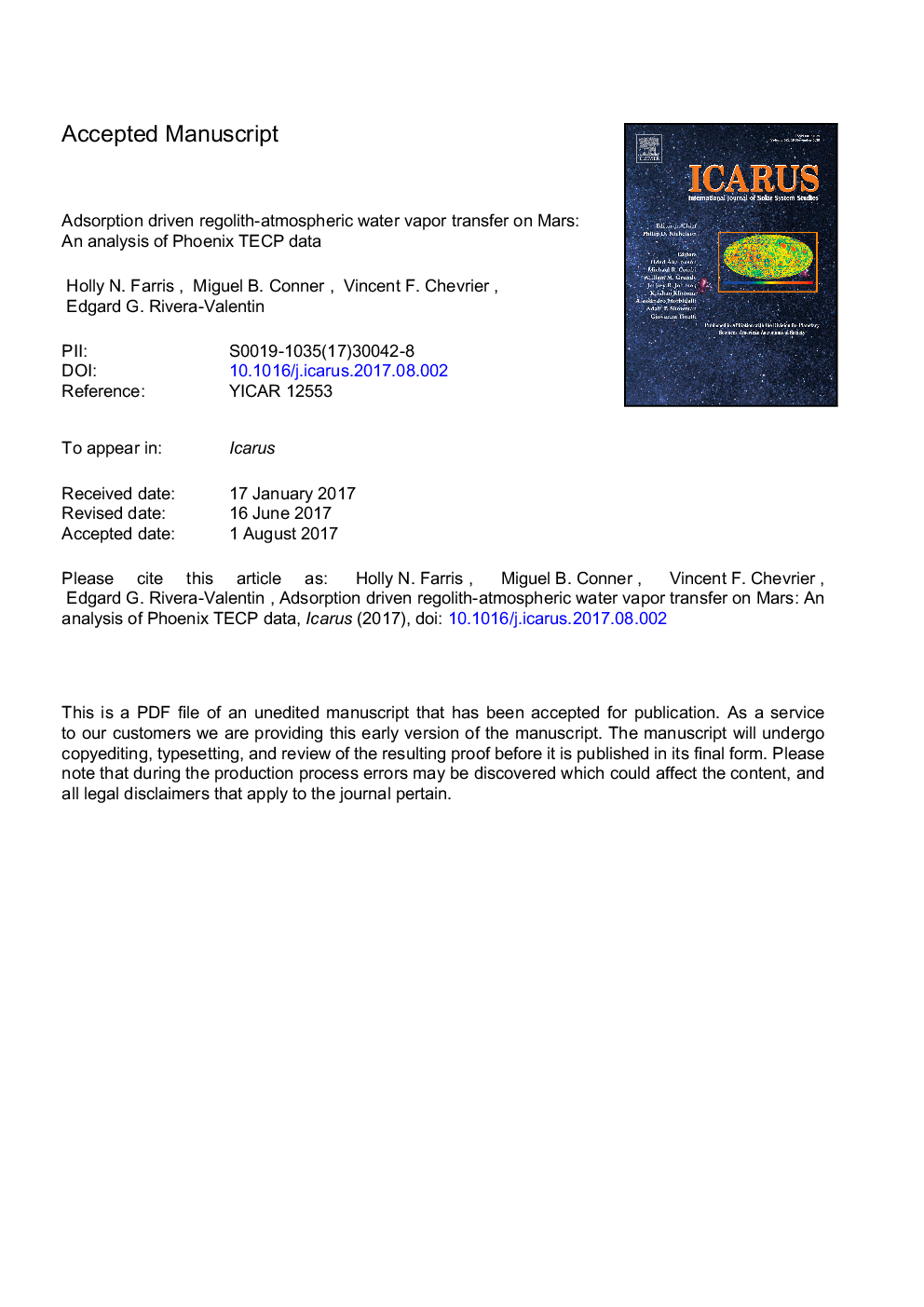| Article ID | Journal | Published Year | Pages | File Type |
|---|---|---|---|---|
| 8134145 | Icarus | 2018 | 23 Pages |
Abstract
We analyze Phoenix Thermal and Electric Conductivity Probe (TECP) instrument data and previous experimental data to present constraints on the parameters for regolith-driven adsorption at the Phoenix landing site. Modeling Brunauer-Emmett-Teller (BET) adsorption of the data across Mars-relevant materials yielded fairly constant surface coverage and enthalpy values, θâ=â0.336, corresponding to 2.96âÃâ10â7â¯kg of H2O/m2 and ÎH =â52.783â+/â1.206â¯kJ/mol, respectively. With our modeled BET adsorption coefficient, Câ=â89.4, and ideal specific surface area, SSA =â1.7âÃâ¯104â¯m2/kg, we conclude that the regolith at the Phoenix landing site is most likely a mixture, which we bracket with a range of possible adsorption conditions. Ultimately, we explain adsorbed water content in the regolith at the Phoenix landing site and thus, adsorption being driven by localized, diurnal variations in the relative humidity.
Related Topics
Physical Sciences and Engineering
Earth and Planetary Sciences
Space and Planetary Science
Authors
Holly N. Farris, Miguel B. Conner, Vincent F. Chevrier, Edgard G. Rivera-Valentin,
